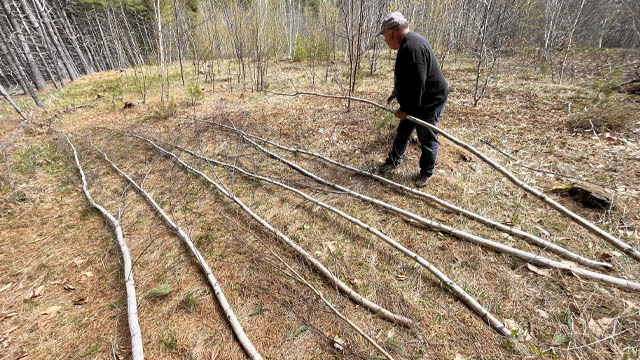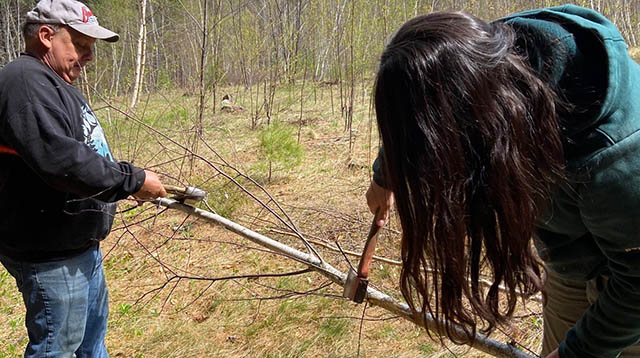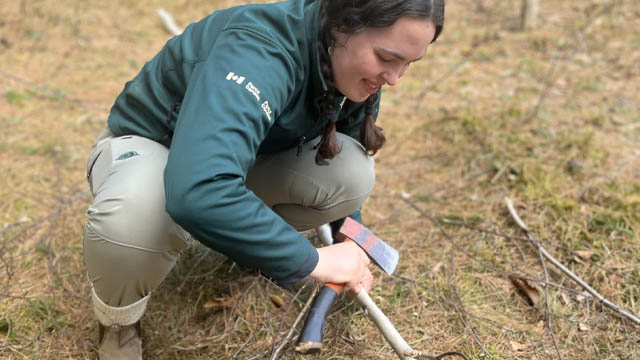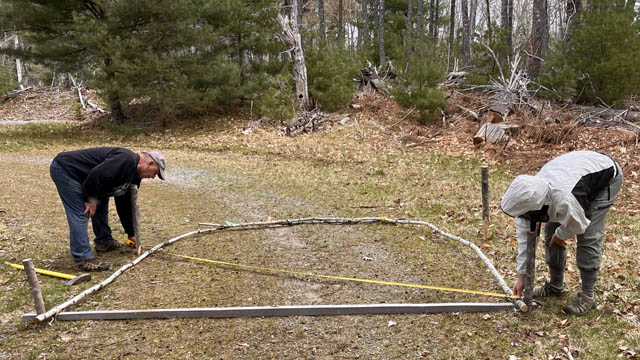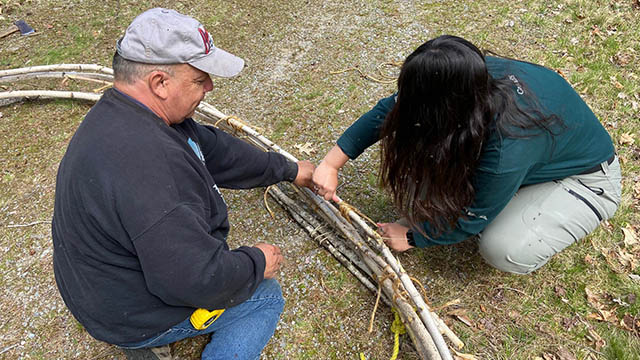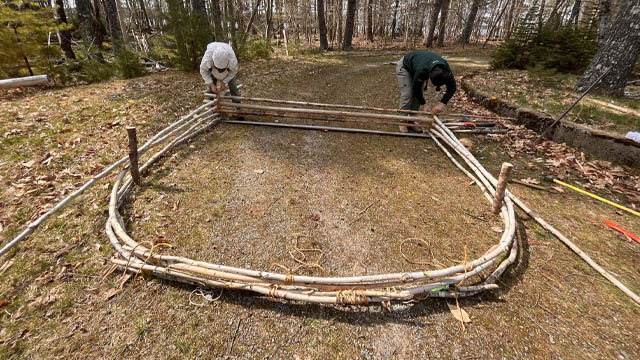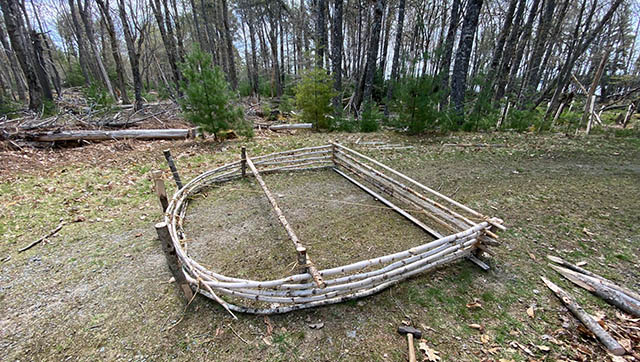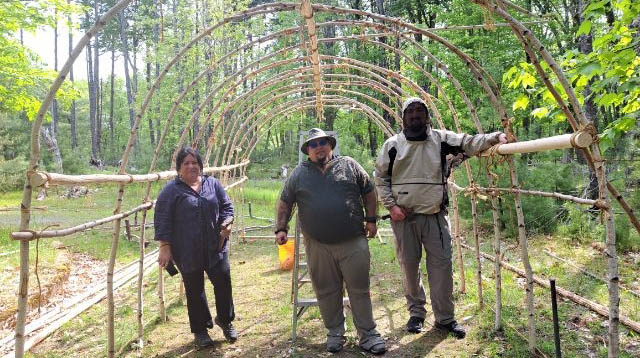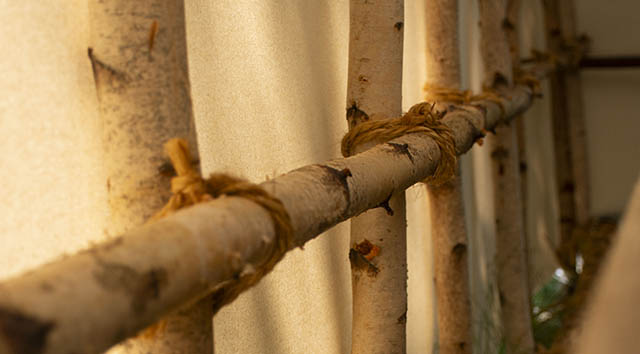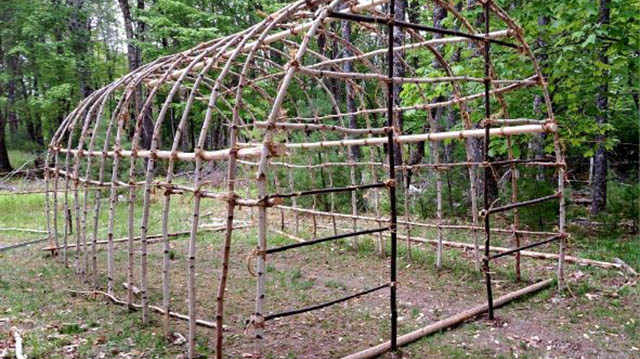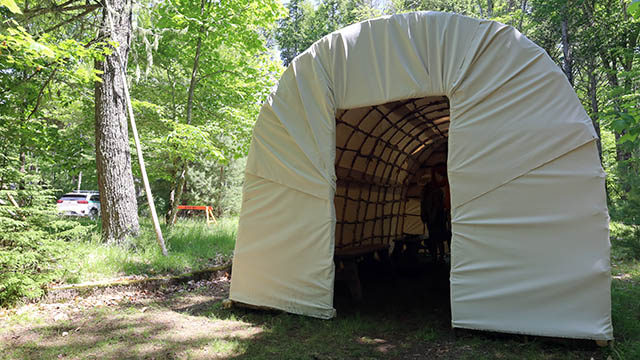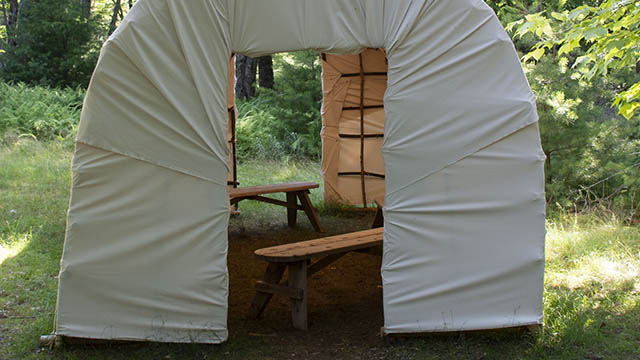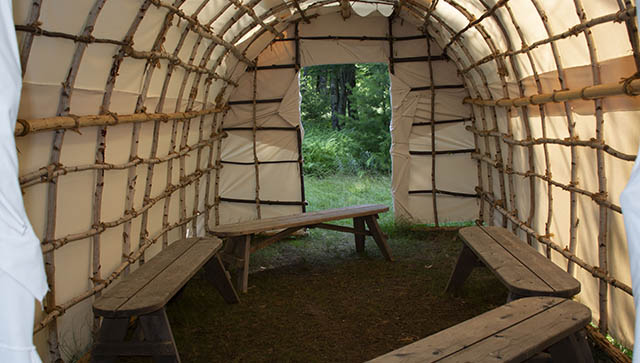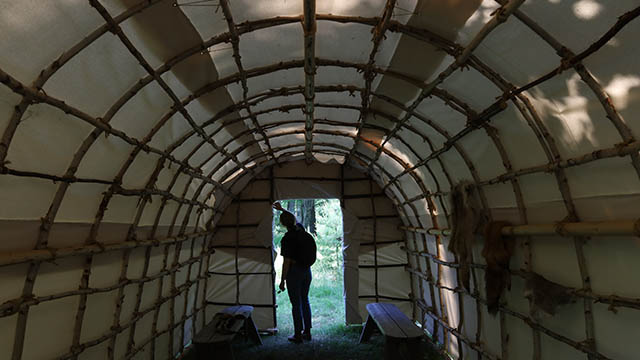
Traditional L’nu Longhouse
Kejimkujik National Park and National Historic Site
Longhouses were, and continue to be, essential to any Mi'kmaw community. People lived and worked in and around them. Each longhouse would shelter one family, often creating a multigenerational household with extended family. These homes could be extended in size as needed.
The longhouse is a symbol of all society, based on the relationships between and through the matriarch and the overall support that everyone benefited from.
Building a traditional longhouse
A traditional longhouse has been built at Kejimkujik National Park and National Historic Site. Todd Labrador provided his expertise and led the build alongside his family. Parks Canada interpreters and Earth Keepers assisted in its construction.
This longhouse is named the L'nu Longhouse. It is 20 feet long by 10 feet wide and 8 feet tall.
What is the longhouse made of?
The frame of the longhouse is made from small trees no larger than 2” diameter that are bent into shape.
Traditionally, the longhouse would be covered like a wigwam in birchbark, but because of climate change and sustainability, the L’nu Longhouse is covered in canvas.
Where were longhouses traditionally located?
It is believed that there may have been a longhouse located near Port Mouton. There are claims in Champlain’s writings that support this (1604). At this time, there is no known evidence that longhouses were built and used in Kejimkujik.
Visit the L’nu Longhouse
Everyone is welcome. Please respect this space and treat it well so others can enjoy it as well.
Come to the encampment site in Merrymakedge P2 to see the L’nu Longhouse.
Interpretive programs
Participate in the Mi’kmaw encampment program at the L’nu Longhouse this summer!
- Date modified :
